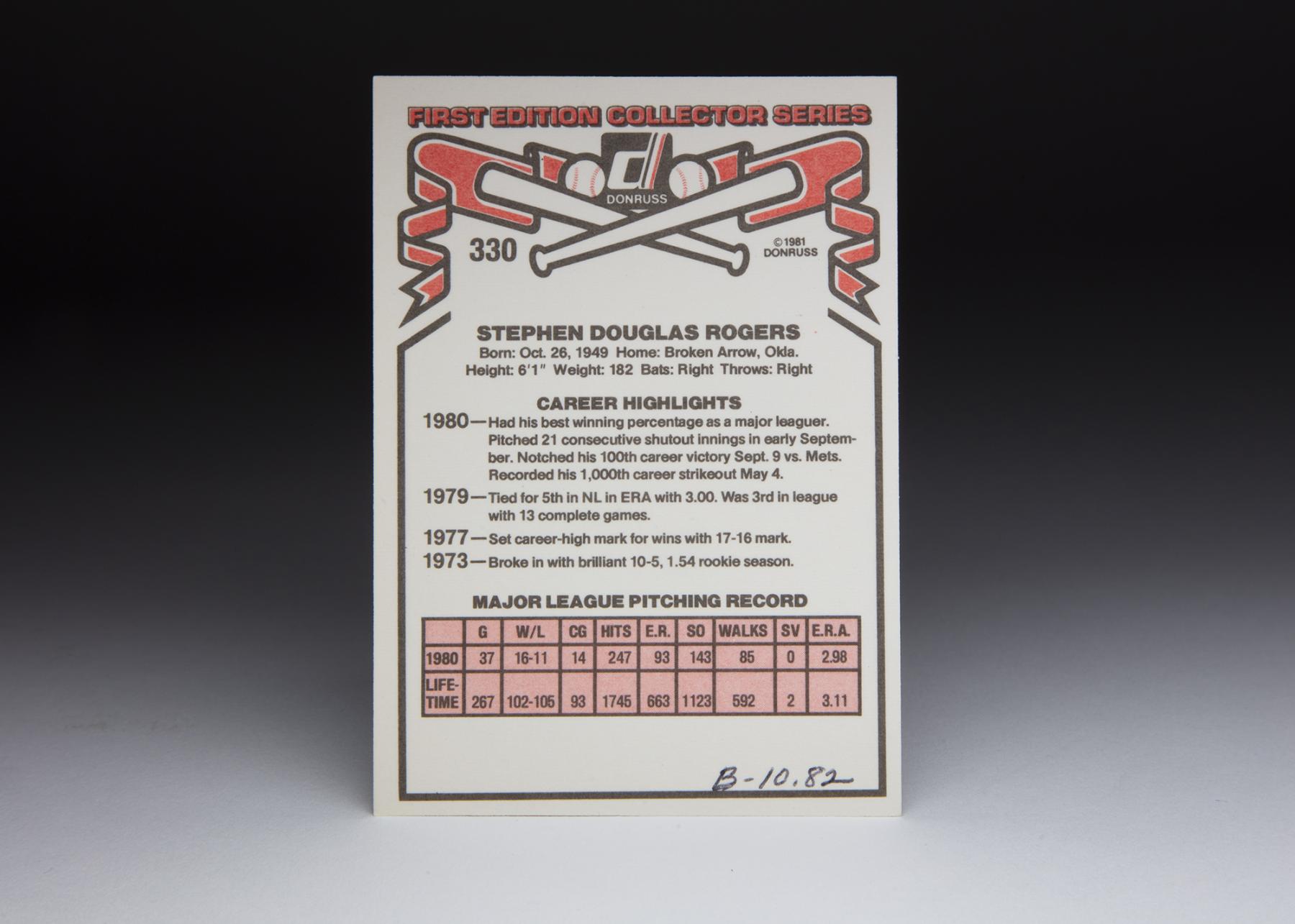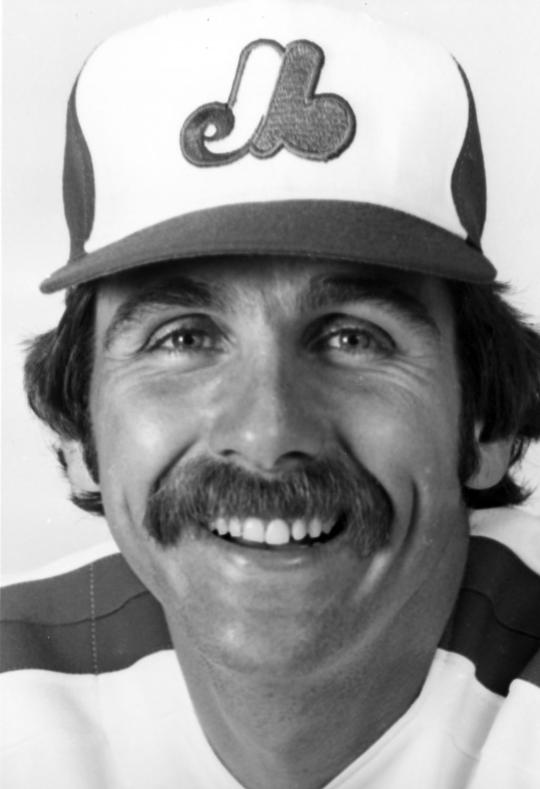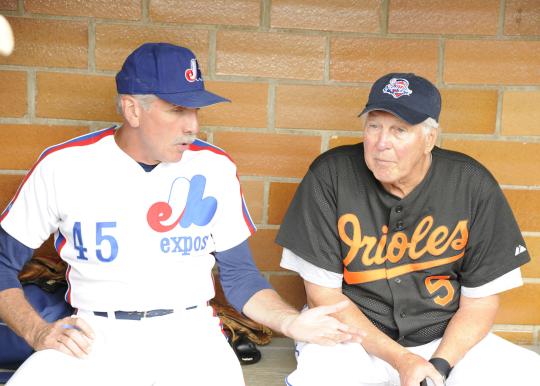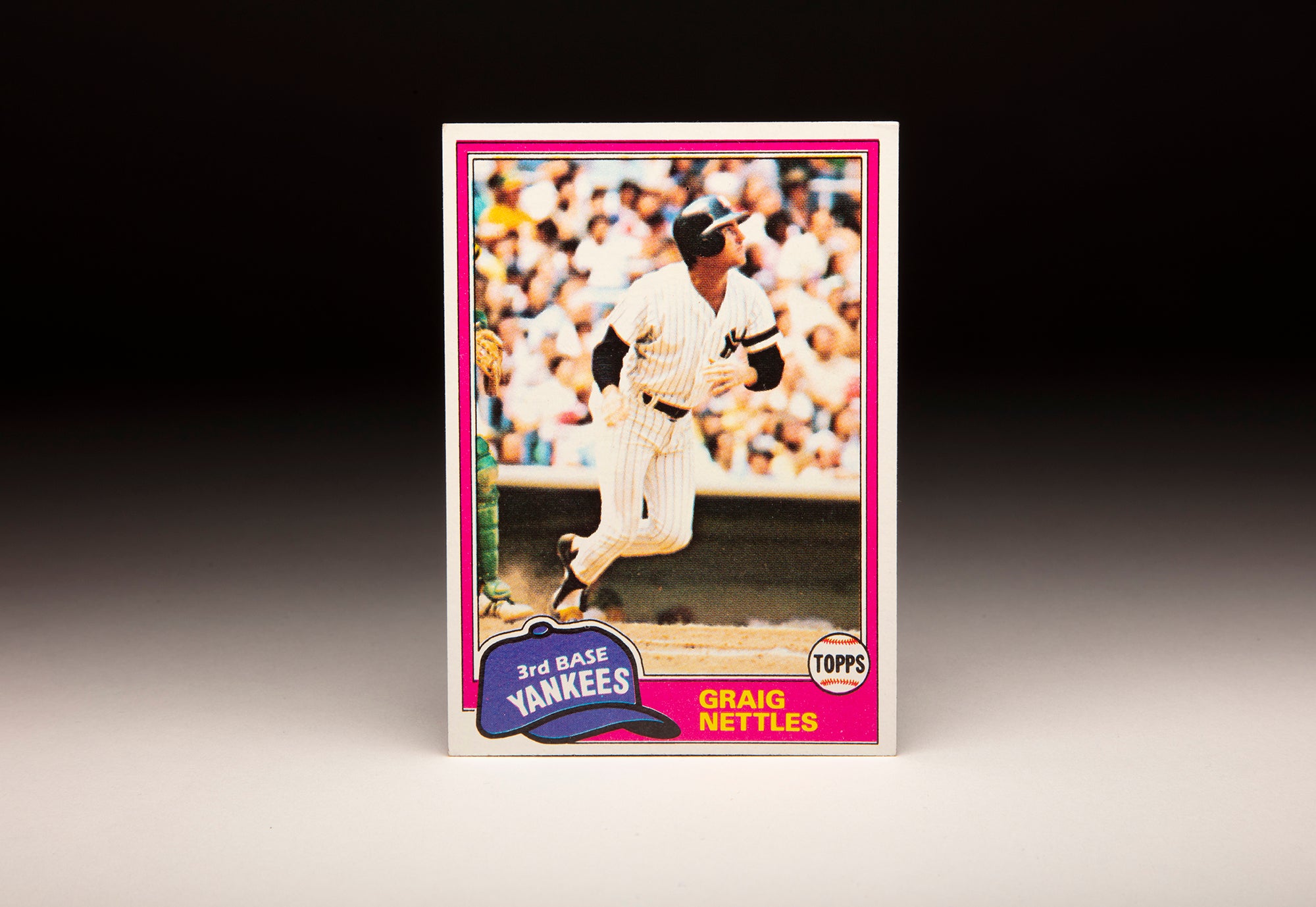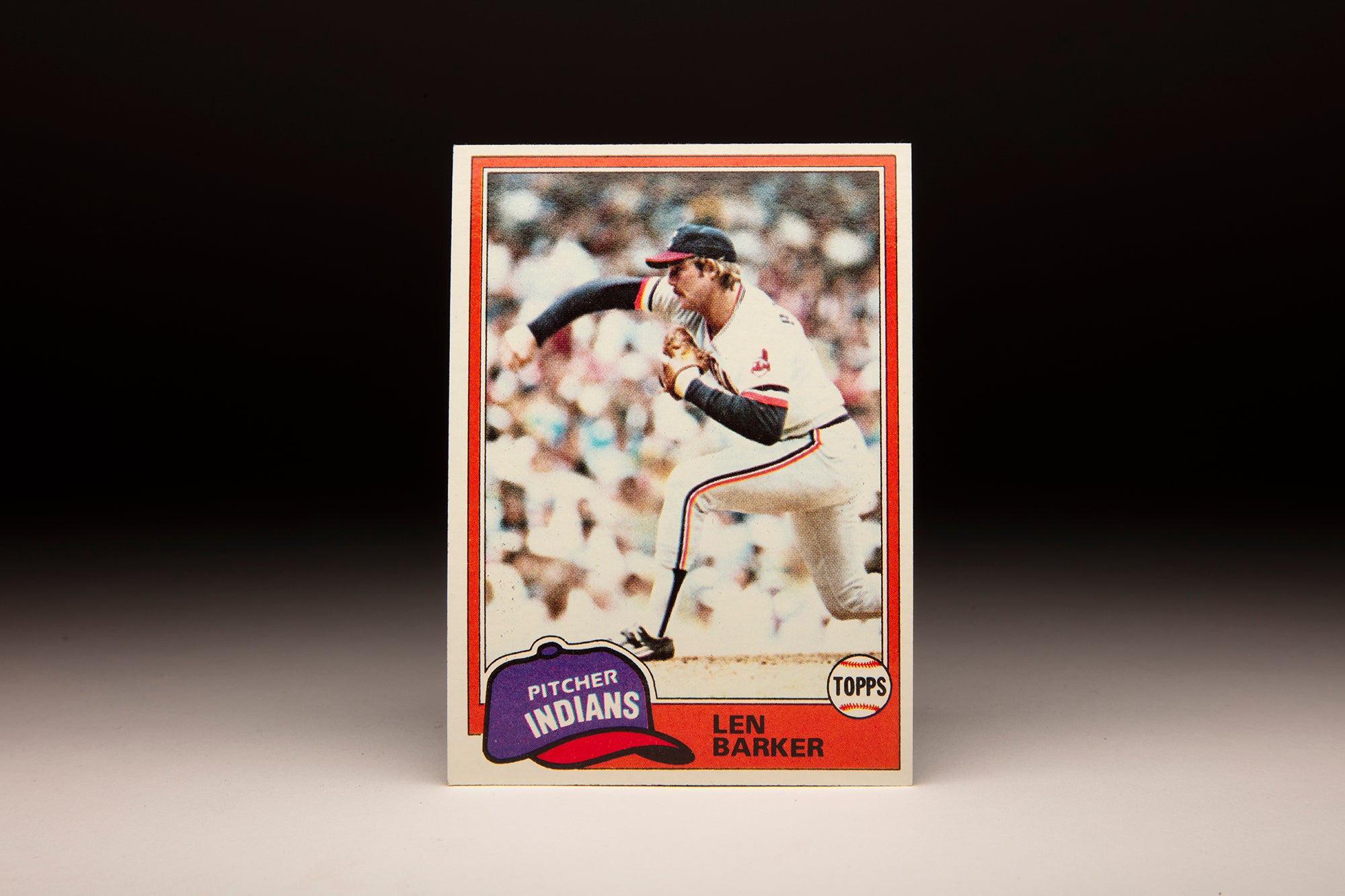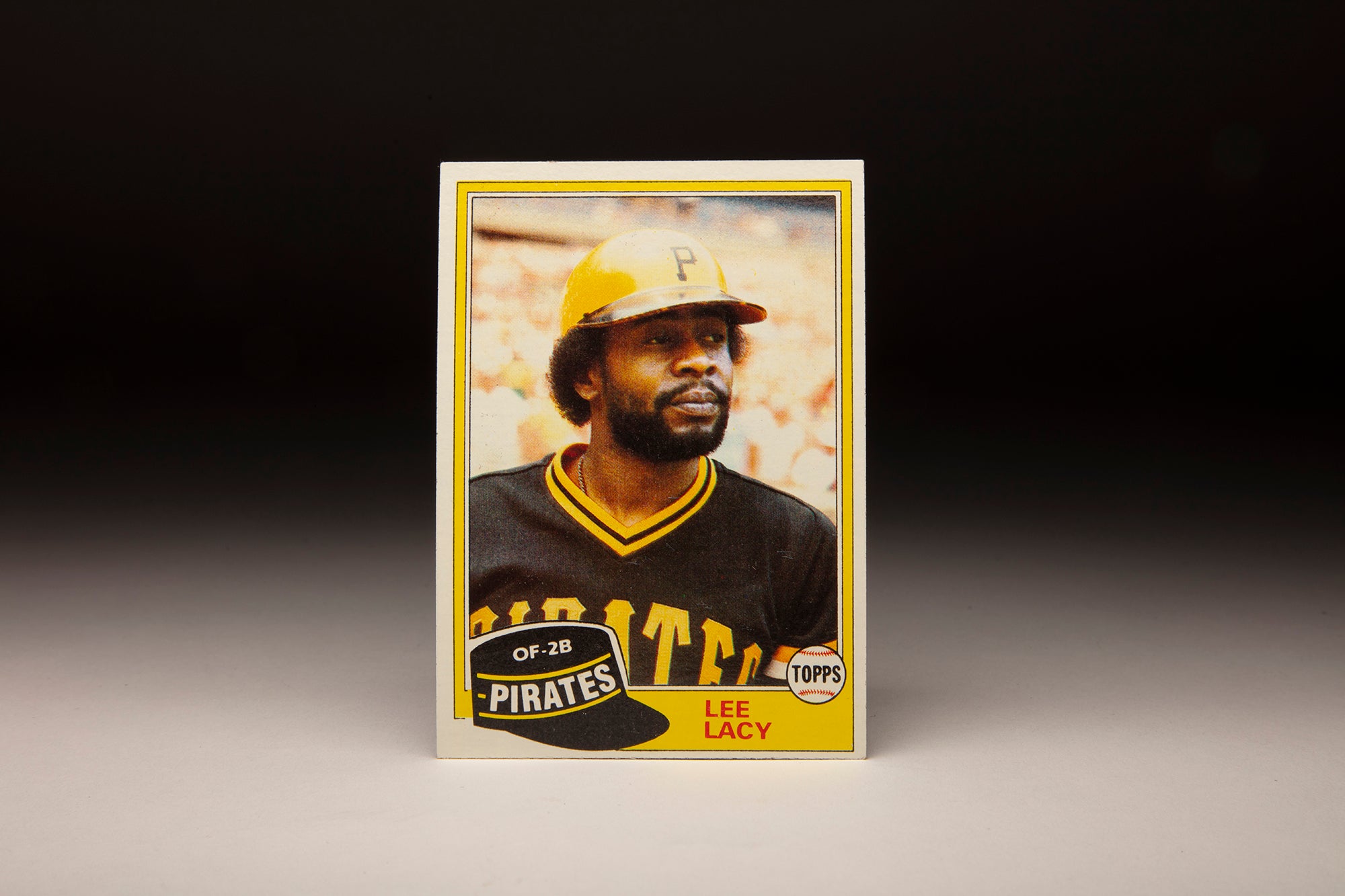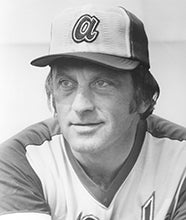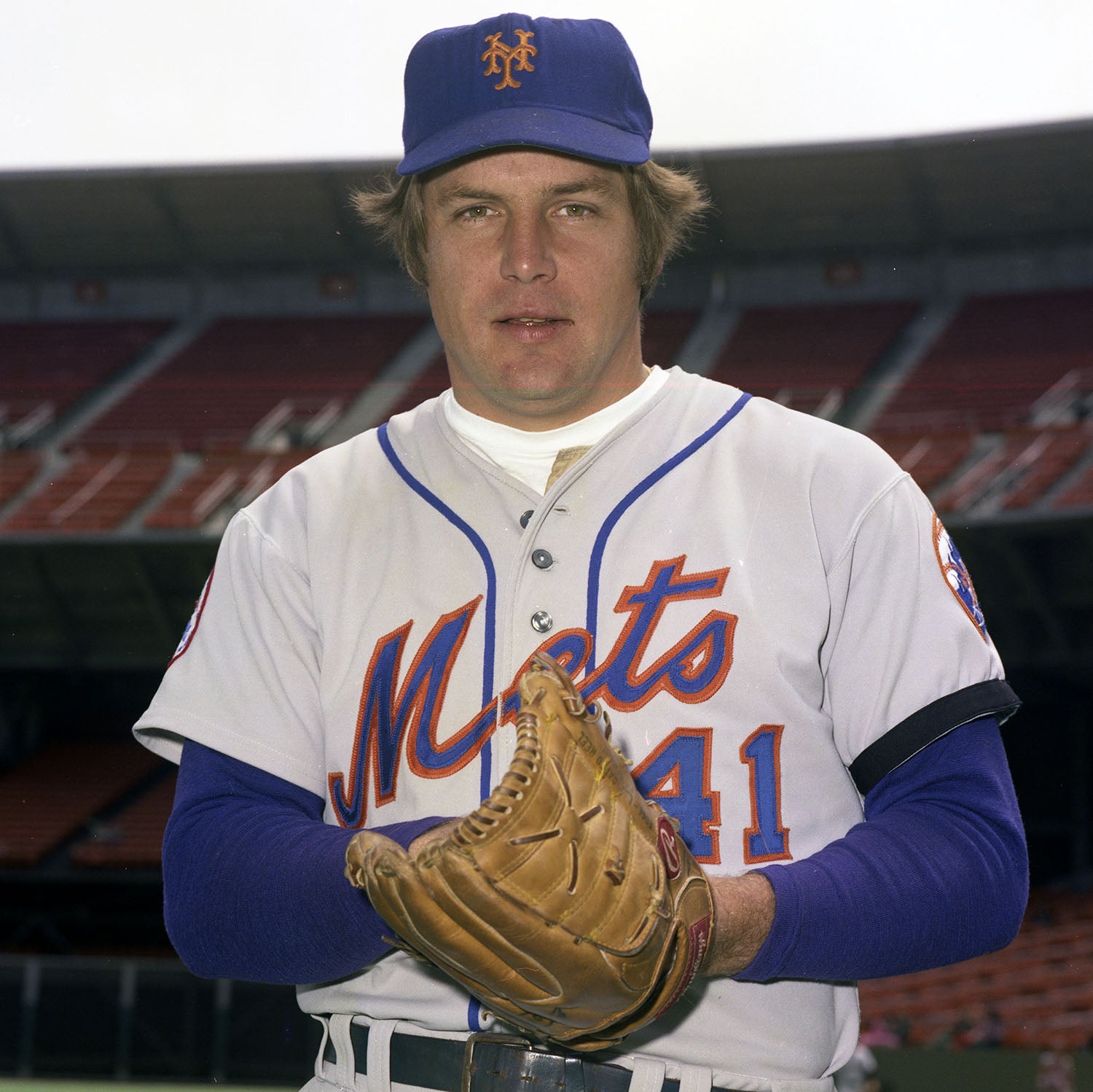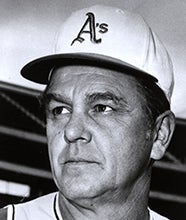- Home
- Our Stories
- #CardCorner: 1981 Donruss Steve Rogers
#CardCorner: 1981 Donruss Steve Rogers
He was the ace of a Montreal Expos team that came thisclose to greatness – a club that featured future Hall of Famers Gary Carter, Andre Dawson and Tim Raines in the prime of their careers.
And though Steve Rogers and his Montreal teammates never made it to the top of the baseball mountain, Rogers’ legacy is that of a pitcher who – for a period of time – was a contender for the title of “best in baseball”.
Stephen Douglas Rogers was born Oct. 26, 1949, in Jefferson City, Mo. He starred for Glendale High School and his American Legion team and was scouted by Tom Greenwade, the same Yankees scout who signed Mickey Mantle.
The Yankees selected Rogers in the 60th round of the 1967 MLB Draft, one of only six players selected in what was the final round of that draft. But Rogers opted to enroll at the University of Tulsa.
“I still had a lot to learn,” Rogers told the Springfield Leader and Press. “I would have had problems away from home.”
Rogers fit right in at Tulsa, and in 1969 the Golden Hurricane reached the finals at the College World Series, where they fell to Arizona State 10-1 in the title game – the Sun Devils’ third championship in five seasons.
As a junior, Rogers went 10-1 for Tulsa while leading the team to the Missouri Valley Conference title for the second straight year while earning all-league honors.
As a senior, Rogers separated his left shoulder while checking his swing at the plate – an injury that would hound him for several years. But with his pitching shoulder intact, Rogers earned All-American status. In June, the Expos took Rogers in the first round of the 1971 MLB Draft.
Sent immediately to Triple-A Winnipeg of the International League, the 21-year-old Rogers went 3-10 with a 3.97 ERA in 102 innings. Following the season, he returned to Tulsa and received a degree in petroleum engineering in January of 1972.
Rogers missed the first two months of the 1972 minor league season while serving six months in the Army Reserve, then returned to the International League but was regularly absent from the Triple-A Peninsula Whips due to meetings and summer camp – going 2-6 with a 4.08 ERA in 13 starts.
He made up for the lost time, however, in the Florida Winter Instructional League and in Puerto Rico after the season. In Puerto Rico, Rogers first developed a slider that would one day be considered one of the best in the game.
“My fastball is average to a little better than average in velocity,” Rogers told the Springfield Leader and Press in the spring of 1973 when he was fighting to maintain 175 pounds on his slender 6-foot-1 frame. “It’s nothing overpowering. I’m a sinker/slider pitcher.”
Rogers impressed Expos manager Gene Mauch in Spring Training but was again sent to the minor leagues, where he was a combined 7-6 with a 2.46 ERA in 15 starts for Double-A Quebec and Triple-A Peninsula. On July 18, Rogers debuted with the Expos – allowing two runs over eight innings in a no-decision against the Astros.
Eight days later, Rogers pitched a one-hit shutout against the Phillies to record his first big league victory.
“He’s got great stuff,” Mauch told the Associated Press, “and has no fear of throwing it.”
Rogers would finish the season with a 10-5 record and 1.54 ERA in 134 innings – 28 short of qualifying for the ERA title that he would have won easily (his mark was more than a half a run better than Tom Seaver’s winning average of 2.08) had he pitched enough innings.
Rogers finished second to the Giants’ Gary Matthews in the NL Rookie of the Year voting – but his WAR of 5.0 easily bested Matthews’ mark of 3.4.
But Rogers easily outdistanced the Giants’ Elias Sosa in the race for the Sporting News NL Rookie Pitcher of the Year Award and was also named the right-handed pitcher on the Topps All-Rookie team.
Expectations were high for Rogers in 1974, but he started slowly in Spring Training as he experimented with different breaking balls and changeups. But after winning six of his first seven decisions – a stretch that included five complete games – Rogers found himself with a 6-1 record and 3.20 ERA when he awoke on May 15, and was 10-10 at the All-Star break when he was named the Expos’ lone representative in the Midsummer Classic.
It would be the high point of a season where he finished 15-22 with a 4.47 ERA, allowing an NL-worst 126 earned runs. But the Expos won 79 games in 1974 – as they did in 1973 – and seemed to be poised to become one of the NL East contenders in 1975.
The 1975 season, however, saw Montreal slip to 75-87, which cost Mauch his job. Rogers went 11-12 with a 3.29 ERA.
Rogers drew his first Opening Day start in 1976 for new manager Karl Kuehl, but the Expos struggled all season with an offense that produced only 531 runs. Rogers finished 7-17 – the most losses in the NL – but had a 3.21 ERA over 230 innings for a Montreal team that lost 107 games.
Kuehl did not last the season, as he was replaced by Charlie Fox in September. Fox was then named general manager the following month and hired Dick Williams, who skippered the Oakland A’s to championships in 1972 and 1973, to field a winner in new Olympic Stadium, which the Expos called home for the first time in 1977.
Williams named Rogers – who signed a three-year deal worth a reported $240,000 following the 1976 season – his Opening Day starter and began molding young talent like Carter and Dawson into a winning lineup. Rogers went 17-16 with a 3.10 ERA in 301.2 innings as Montreal won 75 games.
Rogers was one of four pitchers – including Dave Goltz, Phil Niekro and Jim Palmer – who topped the 300-innings mark in 1977.
Since then, only Niekro (in 1978 and 1979) and Steve Carlton (1980) have worked 300 innings in one season.
Earning his third straight Opening Day start in 1978, Rogers was 11-7 heading into the All-Star break and was named to his second All-Star Game. Unlike 1974, Rogers saw action this time – working two scoreless innings in the National League’s 7-3 victory.
“I got Rod Carew out,” an exuberant Rogers told the Associated Press after the game at San Diego Stadium, one of two future Hall of Famers – along with Jim Rice – that Rogers would retire that night. “I’ve never gotten that man out in six years of Spring Training.”
But soon after the All-Star Game, Rogers’ season turned sour. As the Expos team representative, Rogers intervened during a heated clubhouse confrontation between Fox and shortstop Chris Speier. Fox and Rogers then exchanged words – and Fox punched Rogers in the jaw.
The incident made headlines across the country, and Fox was fired after the season.
“I realize that the locker room is not sacred to the players, but anything that happens there should be positive and be aimed at helping us win,” Rogers told the Associated Press following the incident which saw Fox intensely encouraging Speier to be more aggressive at the plate. “I tried to explain to Fox that I thought that what I said wasn’t inflammatory, but we’ve had our differences in the past.
“It’s too bad that it had to happen. I’m not sure if I moved in because I am the player rep or because I was a teammate witnessing a bad scene.”
Speier, apparently motivated, hit for the cycle against the Braves following the incident. Rogers finished the season with a 13-10 record and 2.47 ERA, missing the entire month of September with bone chips in his elbow – a condition that was repaired by Dr. Frank Jobe.
But despite the turmoil and injury, Rogers had now established himself as one of the most effective pitchers in the game.
“I’m becoming a much better pitcher just watching Rogers pitch,” Expos rookie Hal Dues told the Springfield Leader and Press in 1978. “I don’t have to ask him what he’s doing. I just watch him. He’s the best pitcher I ever saw.”
The Expos won 76 games in 1978, then put it all together behind Rogers in 1979. Montreal won 95 games and battled Pittsburgh for the title throughout September – staying alive until the season’s final day when the Pirates defeated Chicago and Montreal, with Rogers allowing two runs over eight innings, was shut out by Steve Carlton and the Phillies 2-0.
“I don’t know, I guess it’s the kind of thing that in a month we’ll look back on and realize the kind of year we had,” Rogers told the Burlington (Vt.) Free Press. “Right now, it’s disappointing.”
Rogers finished the season with a 13-12 record and 3.00 ERA, leading the majors with five shutouts while working 248.2 innings. But he clashed with Williams several times as the future Hall of Fame manager pushed his young team harder as the season progressed.
In 1980, the Expos again remained in contention until the final weekend – this time falling short on the season’s penultimate day when Mike Schmidt’s 11th-inning homer gave Philadelphia a 6-4 win and the NL East title. Rogers started that game, allowing three runs over seven innings and leaving with the Expos leading 4-3.
Rogers finished the season with a 16-11 record, a 2.98 ERA and an NL-best 14 complete games. He received Cy Young votes for the first time, finishing fifth overall in the NL balloting.
The Expos began the 1981 season as one of the favorites in the National League and captured the baseball world’s attention thanks to rookie speedster Tim Raines, who began stealing bases at an almost unprecedented rate. By the time the strike interrupted the season in mid-June, Raines had totaled 50 steals.
Rogers started the season slowly but was 7-4 with a 4.39 ERA after shutting out the Braves on June 11. Montreal was 30-25 at the time of the strike, four games behind the division-leading Phillies. When the season resumed in August, the Phillies were declared first-half champions – meaning the Expos still had a chance to make the postseason.
But with the Expos at 14-12 on Sept. 7 – a game-and-a-half behind St. Louis – Montreal club president John McHale fired Williams and replaced him with player development director Jim Fanning. The team responded with a stretch of 12 wins in 16 games, with Rogers winning three games in September while lowering his ERA to 3.42.
Rogers shut out the Mets in a 3-0 victory on the final Friday of the regular season. The next day, the Expos won again to wrap up the NL East’s second-half crown.
Rogers started Game 1 of the Division Series against the Phillies, outdueling Steve Carlton by allowing just one run over 8.2 innings, with Jeff Reardon picking up the save in Montreal’s 3-1 win.
“I’m always disappointed when I don’t finish,” Rogers, who was battling a blister, told the Associated Press. “But the quality of my pitches had vastly diminished. I had run out of gas.”
Returning to start the best-of-5 series’ final game, Rogers broke open a scoreless tie with a two-run single off Carlton in the fifth inning. He went the distance this time, blanking Philadelphia in Montreal’s 3-0 win to send the Expos to the National League Championship Series.
Rogers delivered another masterpiece in Game 3 against the Dodgers, allowing just one run over nine innings as Montreal won 4-1 to take a 2-games-to-1 series lead. But the Dodgers evened the series with a 7-1 win the next day, leaving the series to be decided in Game 5 on Monday, Oct. 19, in Montreal.
Rogers told Fanning he was available in relief for Game 5 despite having already pitched 26.2 innings over three games in the postseason. He had allowed just two earned runs.
Facing Dodgers rookie sensation Fernando Valenzuela, the Expos scored in the first inning when Andre Dawson’s double play grounder plated Raines. Expos starter Ray Burris kept Los Angeles off the scoreboard until the fifth inning, when Valenzuela’s ground out scored Rick Monday to tie the game at 1.
But Fanning removed Burris in favor of a pinch-hitter in the bottom of the eighth, and with the game still tied Rogers emerged from the bullpen to pitch the ninth. After retiring Steve Garvey and Ron Cey, Monday stepped to the plate – and with a 3-and-1 count got a pitch up and out over the plate that he could handle.
The ball flew over Dawson’s head and over the fence in right-center field, giving the Dodgers a 2-1 lead. Back-to-back walks to Gary Carter and Larry Parrish with two outs in the bottom of the ninth put the winning run on base, but Bob Welch relieved Valenzuela and got Jerry White to ground out to second base to end the game and the series.
“I have a terrible feeling for Steve Rogers,” Expos manager Jim Fanning told United Press International. “He carried this club. He has now gained a reputation for being a big money pitcher. By that, I mean he wins when the chips are down. I feel badly that he had to wind up being the loser. He is not a loser with me. He is a winner.”
Rogers proved Fanning right in 1982, going 19-8 with an NL-best 2.40 ERA over 277 innings. He finished second in the NL Cy Young Award voting to Carlton despite a 7.6 WAR that was tops among all big league pitchers.
Rogers was nearly as effective in 1983 when he went 17-12 with a 3.23 ERA over 273 innings, leading MLB with five shutouts and finishing fourth in the Cy Young voting. But the Expos failed to win the NL East in either 1982 or 1983.
Then in 1984, Rogers missed all of Spring Training with a sore shoulder and did not start on Opening Day for the first time since 1975, snapping a string of eight straight assignments in the season opener. Rogers returned to the rotation in mid-April and took his regular turn for the rest of the season. But the results were not there, as he finished with a 6-15 record and 4.31 ERA.
Rogers made his ninth Opening Day start in 1985, but was 2-4 with a 5.68 ERA through eight appearances. On May 21, the Expos – believing Rogers’ shoulder was irreparably compromised – released the winningest pitcher in team history.
The night before – with rumors of his release in the air – Rogers received a standing ovation from theater fans during a promotional appearance for the opening of the movie Brewster’s Millions, which featured Richard Pryor as an aging pitcher who had inherited a fortune.
“I was living a month-long lie,” Rogers told the (Montreal) Gazette following his release. “(The Expos) simply wanted to give me four or five starts as quickly as possible, so they could make up their mind about the fifth starter.
“I just have to go out (now) and find a job somewhere and pitch well. Do I feel like I can help, like I can throw and be effective and win in the major leagues? I absolutely do believe that.”
Rogers soon worked out for the Angels – and manager Gene Mauch, who skippered Rogers in Montreal his first three seasons – but no contract offer came from it. He would never pitch in the big leagues again.
Rogers finished with a record of 158-152, a 3.17 ERA and five All-Star Game selections. He is one of only five pitchers who began their big league careers in 1970 or later with at least 35 career shutouts (he totaled 37). The other four are Bert Blyleven, Roger Clemens, Randy Johnson and Greg Maddux.
“The greatest days were in 1981,” Rogers told the Gazette. “The (game) against the Mets, the two games against the Phillies, then the start against the Dodgers. Those were maybe the four best games in a row in my career, and they meant the most.”
Craig Muder is the director of communications for the National Baseball Hall of Fame and Museum


